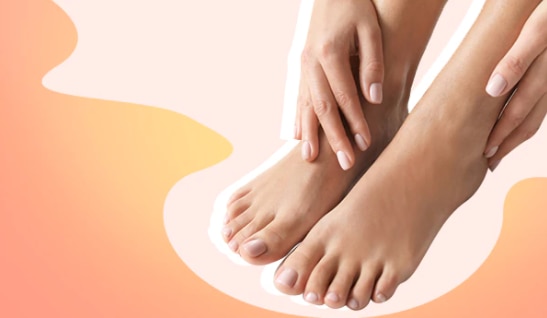Understanding Excessive Sweating: Dermatology Insights on How to Stop Sweaty Hands
Understanding Excessive Sweating: Dermatology Insights on How to Stop Sweaty Hands
Blog Article
Introducing the Complexities of Excessive Sweating: A Comprehensive Guide to Diagnosis and Monitoring
Extreme sweating, medically known as hyperhidrosis, is a condition that influences a substantial number of people and can have an extensive impact on their quality of life. While sweating is an all-natural physical function, its overactivity in hyperhidrosis provides a distinct set of difficulties that commonly go beyond mere pain.
:max_bytes(150000):strip_icc()/the-doctor-cosmetologist-makes-injections-of-botulinum-toxin-on-the-palms-of-a-woman-against-hyperhidrosis--women-s-cosmetology--skin-care--1254089846-9a8ff2f7f5dc47f18339b3c9d138c5fd.jpg)
Recognizing Hyperhidrosis Causes
Hyperhidrosis creates can be attributed to different aspects such as genes, hormonal discrepancies, and particular medical conditions. Genetics play a significant duty in primary focal hyperhidrosis, where individuals acquire the problem from their family participants. By determining the specific factors contributing to too much sweating, healthcare suppliers can customize therapy plans to resolve the underlying cause, providing relief and improving the quality of life for individuals impacted by hyperhidrosis.
Identifying Hyperhidrosis Manifestations

In addition, hyperhidrosis signs and symptoms might materialize in social and psychological distress, as individuals might really feel self-conscious or nervous regarding their sweating, causing avoidance of social situations (Exessive Sweating). In addition, repeated episodes of excessive sweating can result in skin maceration, fungal infections, and an overall decline in self-confidence
Diagnostic Process for Hyperhidrosis
Launching the diagnostic procedure for too much sweating involves comprehensive assessment of the individual's medical background and physical examination. Making inquiries concerning the start, duration, and causes of sweating episodes is vital to set apart in between key focal hyperhidrosis and secondary generalised hyperhidrosis. Case history ought to likewise include inquiries concerning medications, medical problems, and family background of hyperhidrosis.
Throughout the physical exam, specific attention is paid to the areas influenced by sweating. The health care provider may examine the degree of sweating, look for signs of underlying problems, and evaluate the effect of sweating on the individual's top quality of life. Additionally, specific examinations like the gravimetric test, starch-iodine test, or skin conductance measurements might be conducted to measure the quantity of sweat generated.
Moreover, in instances where second hyperhidrosis is believed, additional examinations such as blood examinations, urine tests, and imaging research studies may be suggested to determine the underlying reason for excessive sweating. The analysis process aims to accurately identify the type and cause of hyperhidrosis to lead appropriate management strategies.
Treatment Alternatives for Hyperhidrosis
When addressing too much sweating, different treatment options are offered to ease symptoms and improve the person's quality of life. The therapy strategy for hyperhidrosis depends upon the extent of signs and symptoms and the individual's response to preliminary therapies.
Topical treatments, such as aluminum-based antiperspirants, are usually suggested as the initial line of defense for managing light situations of hyperhidrosis. For people with much more extreme signs, dental medications like anticholinergics might be recommended to aid decrease sweating.

Effective Management Strategies
To successfully handle hyperhidrosis, a extensive and customized treatment strategy customized to the individual's certain demands and response to previous therapies is essential. This strategy may integrate a mix of restorative approaches, consisting of lifestyle adjustments, topical treatments, dental drugs, botulinum toxic substance shots, iontophoresis, and in extreme instances, surgical interventions like sweat gland elimination or sympathectomy. Lifestyle alterations such as using moisture-wicking clothing, making use of antiperspirants, and exercising stress-reducing techniques can enhance medical treatments. Topical antiperspirants consisting of aluminum chloride are usually the first-line therapy, with more powerful formulations offered for resistant situations. Dental drugs like anticholinergics might be prescribed for generalized hyperhidrosis. Botulinum toxin shots work for focal hyperhidrosis, offering short-lived alleviation by blocking the launch of acetylcholine. Iontophoresis, involving the usage of a low electrical present to lower gland task, can be helpful for both palmoplantar and axillary hyperhidrosis. Surgical options are commonly scheduled for extreme, refractory instances and require careful consideration of benefits and dangers. A multidisciplinary technique involving skin doctors, medical care physicians, and, if essential, surgeons, can maximize the monitoring of hyperhidrosis.
Verdict
In verdict, hyperhidrosis is a problem characterized by too much sweating, which can considerably affect an individual's top quality of life. With proper medical diagnosis and management methods, individuals suffering from hyperhidrosis can discover alleviation and enhance their overall well-being.
Extreme Treatment for hyperhydrosis of hands and feet sweating, clinically known as hyperhidrosis, is a problem that affects a significant number of people and can have a profound impact on their high quality of life. By identifying the details elements contributing to too much sweating, health care suppliers can customize therapy strategies to attend to the underlying cause, supplying alleviation and improving the quality of life for individuals impacted by hyperhidrosis.
Hyperhidrosis, identified by extreme sweating beyond what is needed for controling body temperature, can substantially influence an individual's high quality of life. Asking concerning the start, period, and triggers of sweating episodes is crucial to distinguish between main focal hyperhidrosis and secondary generalized hyperhidrosis. Exessive Sweating.In final thought, hyperhidrosis is a condition defined by excessive sweating, which can significantly impact an individual's quality of life
Report this page